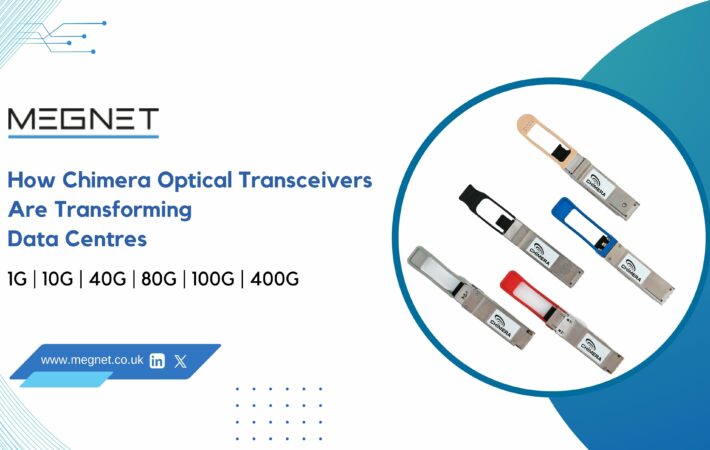
Embracing Efficiency: The Power of O-Band WDM Transceivers
In today’s rapidly evolving digital landscape, businesses are constantly seeking ways to enhance their network capabilities, improve data transmission speeds, and boost overall efficiency. One technology that has emerged as a game-changer in achieving these goals is the integration of O-Band WDM (Wavelength Division Multiplexing) transceivers. These innovative devices offer a multitude of benefits that can revolutionize the way data is transmitted and managed across networks. In this blog, we delve into the top 10 reasons why integrating O-Band WDM transceivers is a strategic move for businesses looking to stay ahead in the competitive market.
- Enhanced Bandwidth Capacity
The demand for data continues to surge exponentially, driven by the proliferation of digital devices, the Internet of Things (IoT), streaming services, and cloud computing. In such a data-intensive environment, traditional transmission technologies often struggle to keep pace with the increasing bandwidth requirements. This is where O-Band WDM transceivers shine.
By utilizing the optical spectrum in the O-Band (around 1310 nm), these transceivers enable the transmission of multiple data streams simultaneously over a single optical fibre. This wavelength range offers lower attenuation compared to other bands, allowing for longer transmission distances without the need for signal regeneration. As a result, businesses can maximize the utilization of their existing fibre infrastructure and accommodate the growing demand for bandwidth-intensive applications.
Furthermore, O-Band WDM technology provides greater flexibility in wavelength allocation, allowing for more efficient spectrum utilization and increased capacity per fibre. This scalability is essential for future-proofing network infrastructure and ensuring that businesses can adapt to evolving bandwidth requirements without the need for costly upgrades.
- Reduced Latency
In today’s interconnected world, where milliseconds can make a difference, minimizing latency is crucial for delivering a seamless user experience. Whether it’s high-frequency trading in financial markets, online gaming, or real-time communication applications, every microsecond counts.
O-Band WDM transceivers offer lower latency compared to traditional transmission technologies, thanks to their optimized signal processing and transmission characteristics. By operating in the O-Band, these transceivers leverage the inherent properties of optical fibre to minimize signal degradation and propagation delays, resulting in faster data transmission and response times.
Reduced latency not only improves the performance of time-sensitive applications but also enhances overall network efficiency and responsiveness. Businesses can gain a competitive edge by leveraging O-Band WDM technology to deliver superior user experiences and capitalize on emerging opportunities in real-time data processing and analysis.
- Improved Signal Quality
Signal integrity is paramount in ensuring the reliability and accuracy of data transmission, particularly over long distances or in challenging environments. O-Band WDM transceivers excel in maintaining signal quality by minimizing signal distortion, dispersion, and noise.
At the heart of O-Band WDM technology is the use of advanced modulation schemes and error-correction techniques, which optimize the transmission of data over optical fibres. By carefully controlling the modulation format, power levels, and spectral properties, these transceivers can mitigate the effects of dispersion and attenuation, ensuring that signals arrive at their destination with minimal distortion or degradation.
This level of signal quality is essential for supporting mission-critical applications such as high-speed data transfer, video streaming, and telecommunication services. With O-Band WDM transceivers, businesses can rely on robust and dependable network performance, even in challenging operating conditions.
- Enhanced Security
Data security is a top priority for businesses across all industries, particularly in light of increasing cyber threats and regulatory requirements. O-Band WDM transceivers offer inherent security benefits by leveraging the unique properties of optical communication.
By using dedicated wavelengths for each data stream, O-Band WDM transceivers effectively isolate traffic and reduce the risk of interception or eavesdropping. Unlike traditional transmission technologies, which transmit data over a broad spectrum of wavelengths, O-Band WDM transceivers create distinct channels for different data streams, making it more difficult for unauthorized parties to intercept or tamper with sensitive information.
This level of security is essential for protecting confidential data, safeguarding intellectual property, and ensuring compliance with data privacy regulations. By deploying O-Band WDM technology, businesses can enhance their cybersecurity posture and mitigate the risk of data breaches or unauthorized access.
- Cost Efficiency
Investing in network infrastructure can be a significant expense for businesses, particularly as data volumes continue to grow exponentially. O-Band WDM transceivers offer a cost-effective solution for maximizing bandwidth capacity and optimizing network performance.
By consolidating multiple data streams onto a single optical fibre, O-Band WDM transceivers enable businesses to make more efficient use of their existing infrastructure, reducing the need for costly upgrades or expansions. This consolidation not only saves on equipment and installation costs but also simplifies network management and maintenance.
Furthermore, the scalability of O-Band WDM technology ensures that businesses can future-proof their network infrastructure without breaking the bank. Instead of investing in costly rip-and-replace upgrades, businesses can incrementally expand their capacity by adding additional transceivers or upgrading existing ones as needed.
Overall, the cost efficiency of O-Band WDM transceivers makes them an attractive option for businesses looking to optimize their network performance while minimizing capital and operational expenses.
- Seamless Integration
Integrating new technologies into existing network infrastructure can be a daunting task, often requiring extensive planning, configuration, and testing. O-Band WDM transceivers streamline this process by offering seamless integration with standard optical interfaces and protocols.
Whether upgrading from legacy transmission technologies or deploying a new network from scratch, businesses can leverage O-Band WDM transceivers to simplify deployment and minimize disruption. These transceivers are designed to be compatible with a wide range of network equipment and protocols, ensuring interoperability and ease of integration.
Furthermore, O-Band WDM technology is vendor-agnostic, allowing businesses to mix and match transceivers from different manufacturers to meet their specific requirements. This flexibility gives businesses greater freedom in designing and optimizing their network infrastructure without being locked into proprietary solutions.
Overall, the seamless integration of O-Band WDM transceivers makes them an attractive option for businesses looking to enhance their network capabilities without the hassle of complex deployment processes.
- Energy Efficiency
In today’s environmentally conscious world, energy efficiency has become a key consideration for businesses looking to reduce their carbon footprint and minimize operating costs. O-Band WDM transceivers offer significant energy savings compared to traditional transmission technologies, making them an attractive option for environmentally responsible businesses.
The energy efficiency of O-Band WDM transceivers is primarily due to their use of optical communication, which consumes less power compared to electrical transmission. By leveraging the inherent properties of optical fibres, these transceivers can transmit data over long distances with minimal energy consumption, reducing the need for power-hungry amplifiers or repeaters.
Furthermore, the consolidation of multiple data streams onto a single optical fibre further contributes to energy savings by reducing the number of active components in the network. This not only lowers power consumption but also simplifies network management and maintenance, leading to additional cost savings over time.
Overall, the energy efficiency of O-Band WDM transceivers makes them a sustainable and cost-effective choice for businesses looking to optimize their network infrastructure while minimizing their environmental impact.
- Future-Proofing
In today’s fast-paced digital landscape, technological advance alphments are driving constant innovation and change. To remain competitive, businesses must future-proof their network infrastructure to adapt to emerging technologies and evolving user demands. O-Band WDM transceivers offer built-in scalability and flexibility, making them an ideal choice for future-proofing network infrastructure.
The scalability of O-Band WDM technology allows businesses to easily expand their network capacity as needed, without the need for costly upgrades or replacements. Whether accommodating growing data volumes, supporting new applications, or integrating emerging technologies, O-Band WDM transceivers provide the flexibility to scale network infrastructure to meet changing requirements.
Furthermore, O-Band WDM technology is compatible with emerging technologies such as 5G, edge computing, and Internet of Things (IoT), ensuring that businesses can seamlessly integrate these innovations into their network infrastructure. By future-proofing their network with O-Band WDM transceivers, businesses can stay ahead of the curve and position themselves for success in the rapidly evolving digital landscape.
Moreover, O-Band WDM transceivers offer a modular and upgradeable architecture, allowing businesses to adapt to new technologies and standards without the need for wholesale replacements. This modular approach enables businesses to incrementally upgrade their network infrastructure, minimizing disruption and cost while maximizing flexibility and scalability.
By investing in O-Band WDM technology, businesses can future-proof their network infrastructure and ensure that they remain competitive and agile in the face of technological advancements and changing market dynamics.
- Simplified Management
Managing complex network infrastructures can be a daunting task, often requiring significant time, resources, and expertise. O-Band WDM transceivers simplify network management by consolidating multiple data streams onto a single optical fibre, reducing the number of devices and interfaces that need to be monitored and maintained.
With O-Band WDM technology, businesses can streamline network management processes and optimize resource allocation, leading to greater operational efficiency and cost savings. By reducing the complexity of the network infrastructure, businesses can also minimize the risk of errors, failures, and downtime, ensuring reliable and uninterrupted service delivery.
Furthermore, O-Band WDM transceivers support advanced management and monitoring capabilities, allowing businesses to proactively identify and address potential issues before they impact performance or user experience. From remote configuration and diagnostics to real-time performance monitoring and reporting, O-Band WDM technology provides businesses with the tools they need to manage their network infrastructure effectively and efficiently.
Overall, the simplified management capabilities of O-Band WDM transceivers enable businesses to optimize their network performance, reduce operating costs, and enhance overall operational efficiency.
- Competitive Advantage
In today’s hyper-competitive business environment, gaining a competitive edge is crucial for success. O-Band WDM transceivers offer businesses a significant competitive advantage by enabling faster, more reliable, and more secure data transmission capabilities.
By leveraging the power of O-Band WDM technology, businesses can differentiate themselves from competitors by offering superior network performance and reliability. Whether delivering high-speed internet services, supporting mission-critical applications, or ensuring seamless communication and collaboration, O-Band WDM transceivers empower businesses to deliver exceptional user experiences and drive customer satisfaction.
Moreover, O-Band WDM technology provides businesses with the flexibility and agility to adapt to changing market conditions and emerging technologies. By future-proofing their network infrastructure, businesses can stay ahead of the curve and capitalize on new opportunities for growth and innovation.
Embracing the Future with O-Band WDM Transceivers
In conclusion, the integration of O-Band WDM transceivers offers a myriad of benefits that can transform the way data is transmitted, managed, and secured across networks. From enhanced bandwidth capacity and reduced latency to improved signal quality and energy efficiency, the advantages of O-Band WDM technology are undeniable. By embracing these innovations, businesses can unlock new levels of efficiency, scalability, and competitiveness in an increasingly digital world. As technology continues to evolve, O-Band WDM transceivers will undoubtedly remain at the forefront of network optimization, driving growth and innovation for years to come.
FAQ's
O-Band WDM transceivers use wavelengths in the O-band (around 1310 nm) to transmit multiple data streams on a single fiber optic cable.
The O-band offers lower signal attenuation compared to other bands, enabling longer transmission distances without needing signal regeneration.
Increased bandwidth capacity, reduced latency, efficient spectrum utilization, scalability for future growth, and potential cost savings.
They use WDM technology to combine multiple data streams onto different wavelengths of light within the O-band. These streams are then separated at the receiving end.
While there may be an initial investment, the cost savings from increased capacity and potentially reduced need for infrastructure upgrades can offset the cost over time.
Data centers, telecom networks, enterprise networks, and high-performance computing applications.
In many cases, no. O-Band WDM can utilize your existing fiber infrastructure, maximizing its potential.
Required bandwidth, transmission distance, compatibility with existing equipment, and future scalability needs.








Leave a comment
Your email address will not be published. Required fields are marked *